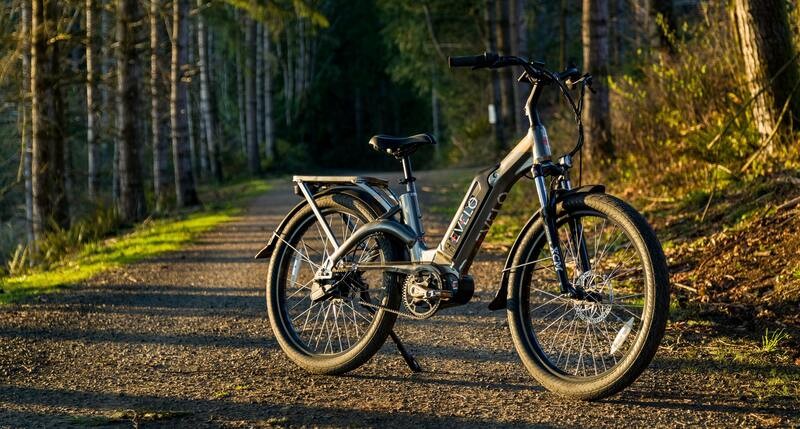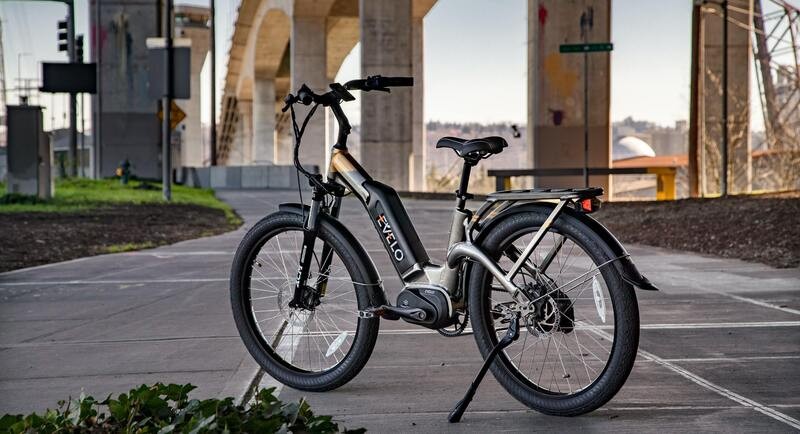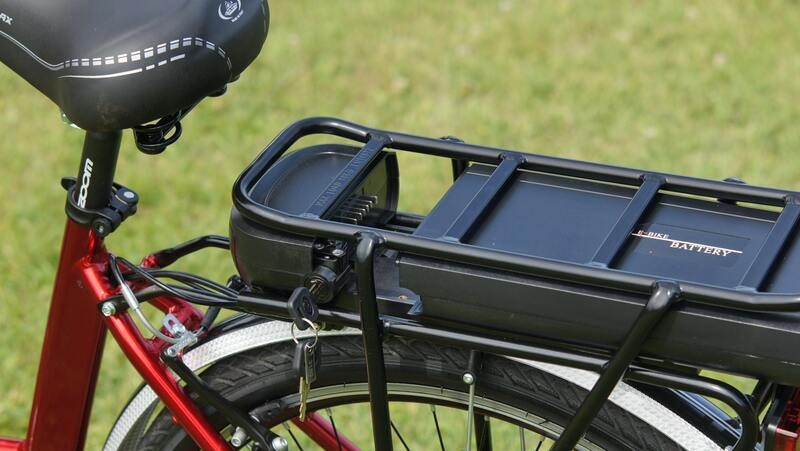The human race has always loved bikes, regardless of the era in which they were created. Currently, a new introduction is elevating this passion for riding even further. Are there any guesses?

Yes, you have guessed right, an electric bicycle is the name of the booming trend that has swept many people by surprise. What is it about these bikes that makes them so popular?
Well, the answer lies in the bike’s design, which is equipped with some extremely strong features that can eradicate many of the issues associated with regular bicycles. Interested in knowing what those aspects are?
Ok, let’s take a look at each one individually. We will also see what are the most promising and most menacing features of e-bikes to determine whether they are really valuable or just a marketing trick that converts so many sales every day.
The Future of Transportation — The Electric Bike
Electric bikes are motorized cycles that use battery power to help you pedal faster. They’re the perfect source for commuting, running errands, and exploring new areas.
The aesthetics of some bikes are sleek and modern, while others are retro-inspired classic models.
Regardless of the class, all electric bikes are exciting and captivating to ride. Depending on your needs, you can choose one.
Exploring the Rapid Expansion of E-Bikes in the 21st Century
E-bikes have been around for quite some time now, and experts predict that they will continue to grow in popularity. In fact, according to market research, global sales of electric bicycles are expected to reach 10 million units annually by 2025.
This growth is likely to be driven by a number of factors, including increased awareness of the benefits of these bikes and an expanding range of models available on the market.
As a result, several new companies have entered the market. Some of these companies are dedicated purely to selling such bicycles, while others offer a wider range of products and services related to this growing industry.
Regardless of what these companies offer, it is clear that there is a lot of interest in E-bikes from both consumers and businesses alike.
Understanding the Mechanics of Electric Bicycles

The operations of battery-operated bikes are precisely the same as that of traditional bicycles. The only thing that makes an e-bike different is its battery and motor assistance.
These bikes generally use a small battery to power an electric motor (commonly known as a mid-drive motor or rear hub motor), which converts the energy from pedal movement into electricity.
This mechanism helps you pedal your bike and makes it easier to get around. The battery usually lasts between 100 and 120 km but can be replaced if needed.
Note: Electric assistance is designed to supplement human power rather than replace it entirely.
The Advantages of Owning an Electric Bicycle
The popularity of e-bikes can be attributed to a variety of factors. Please find below a list of some of the most important ones:
1. Electrically Assisted Pedal Cycle Elevate Speed
If you’re looking to upgrade your electric bike’s speed and capabilities, a higher KV or RPM rating is the way to go.
For example, by swapping in a hub motor, an e-bike running at 20 mph (32 km/h) could reach speeds closer to 28-30 mph (45-48 km/h).
This gear range is perfect for those who want to commute on their e-bike but may not be able to go much faster. It also makes for a comfortable ride as the motor will help you maintain a consistent speed.
2. Support Cardiovascular Fitness
If you’re looking to add some cardiovascular fitness to your routine, an e-bike is a great way to do it. Unlike traditional bikes, e-bikes don’t require you to pedal at 100% capacity – the pedal-assist feature allows you to conserve energy while still getting a good workout.
Additionally, because they are electric, they’re much quieter than traditional bikes. This makes them perfect for use in environments where sound sensitivity is a concern.
E-bike workouts are also very efficient; even on medium or high assist levels, you’ll be able to ride for long distances without running out of energy.
And because they’re so easy on the joints, electric bikes are an ideal choice for people with arthritis or other joint problems.
In fact, many people find that e-biking relieves pressure and tension headaches better than any other form of exercise.
3. Wide Array Of Options
Various designs, battery configurations, motor systems, and key players characterize the e-bike industry. Hence, people can pick an option that fits their needs.
4. E-bikes Boost Pedal Power
Pedal assist e-bikes are like regular bikes, but with the addition of electric power to propel the cyclist forward. The torque sensor measures the amount of effort you put into pedaling and matches it to the motor’s output. Hence, increasing your pedaling speed.
Demerits of Electric Bicycles
Every technology in this world if have pros, then have cons too. Talking about e-bikes, they are still undergoing lots of development to iron out their shortcomings. So, let’s examine their flaws one by one.
1. Battery Capacity In the Development Stage
The progress made by batteries in the real world is quite impressive, but development is still ongoing to improve them even further.
To put it simply, major bike manufacturers are working on expanding battery life so that it can cover more distance while requiring less charging.
2. Heavy Than Regular Bike
The weight of these bikes is typically higher than that of regular bikes. Nevertheless, any bicycle (electrical or non-electrical) feels heavier when climbing hills. Despite the additional weight of an e-bike, the electric assist makes up for it many times.
The one situation in which weight does matter is if you have to lift the bike from the ground.
This is one of the many reasons why motorized bikes are preferred over electric scooters, which are often over 150 pounds in weight and are very dangerous for off-road.
3. Expensive Riding Option
There is no doubt that electric bikes are more expensive than standard regular bikes and electric scooters. The reason behind the hefty cost of an e-bike is its powerful motor and battery, which stands it out from other conventional bikes in the market.
Nevertheless, the price difference may not be that significant for some e-bikes and e-scooters.
Some high-end electric road bikes and mountain bikes can cost up to $15,000. In contrast, most high-end e-scooters range from $6,000 to $8,000.
4. E-MTB Still Improving
Today’s e-bikes perform well off-road, but some of their shortcomings, such as their heavy weight and high battery usage on rocky terrain, make them go down.
However, there is no need to worry since specialists are doing their best to improve your steep hill area experience. To make sure you don’t lack the points mentioned above.
Enjoy a Smooth, Efficient Electric Bike Ride with These Essential Components
1. Electric Motor
Electric bikes are becoming increasingly dominant, not only for their environmental benefits but also for their sporting potential and electric power assistance kind of traits. They provide a convenient and affordable way to get around town.
The massive market of e-bikes has led to several different motor choices, from those integrated into the frame near the center of gravity to those located at the rear wheel hub. While these positions offer different advantages, most mid-class electric bikes use rear hub motors for better control.
This placement minimizes the amount of weight on the front wheel, which improves the riding speed of the bike. Higher-priced motorized bikes often feature motors attached to the frame near the center of gravity.
This position makes handling and changing the motor’s gears easier because it’s centrally located.
2. Controller to Regulate Motor Power
All e-bikes have a power system commonly referred to as a controller that connects the throttle, display, pedal assist, battery, motor, and various sensors. This system serves as the bike’s heart and manages overall bike functions.
Control units allow riders to set the desired speed and adjust the power delivered to the motor based on a specific setting done by you.
They also measure electrical output and provide riders with information about their battery level, motor rpm, and pedal cadence.
Controller-based systems even permit riders to adjust power levels without having to worry about specific components like gears or brakes.
Depending on the type of e-bike and its configuration, different controllers can be used to manage these systems. So, pick wisely or consider asking an expert at a local EV-bike shop.
3. Battery Capacity

Any e-bike is incomplete without a battery, which is also the most expensive component of an motorized bike.
Batterie’s capacity determines how long a bike can be used without recharging, how long it will work, and how heavy it is.
Choosing the right battery is directly related to its efficiency and range. It is noticed that in spite of the same size and weight, different batteries can function quite differently. Make sure you consult a pro before investing in any battery.
A. Wattage
An e-bike’s overall power can be best evaluated by its wattage. Various ranges are available for e-bikes, from 250 watts to 1000 watts. The higher the wattage, the more power the e-bike will generate and the faster it will travel.
For most people, a 500-watt motorized bike is enough to power to get them up and moving. However, if you’re looking for something that can really take you places, then you might want to consider investing in a 1000-watt e-bike. These bikes are capable of speeds up to 20 mph and can provide plenty of power for long distances.
B. Voltage
Voltage measures how much power your bike’s motor can receive from the battery. The better the voltage, the faster the battery can transfer power to the motor, increasing performance.
By combining voltage with amp-hours, you can determine how much power the battery can generate.
Electric bikes typically come with a 48-volt or 52-volt battery. The difference between the two is power and performance. A 52V battery delivers better performance with less energy consumption.
C. Amp Hours
Electric bike amp hours are essential for riders looking for a longer ride. Generally, bikes with higher amp hours will run longer before needing to be plugged in.
This is because the battery can generate more electricity at full voltage, which means the bike will last longer on a single charge.
A good rule of thumb is to buy a battery with at least 50% more amp-hours than you need for your intended use. This way, you’re always ensured that your battery will have enough juice to get you where you’re going.
Additionally, it is essential to note that motorized bikes are not always compatible with every charging system. Therefore, it is vital to research your specific bike and charger before hitting the road.
Note: Wattage, Voltage, and Amp Hours all play crucial roles in electric bikes’ battery life and capacity. So, take these terms into consideration while picking a new battery for your bike.
Explore the Different Operating Modes of Electric Bicycles
Electric bicycles come in three primary operating modes – pedal only, electric only, and pedal assist mode. Each has its own set of benefits and drawbacks. Let’s discuss them one by one:
1. Pedal Only
Pedal-only bikes are the simplest and most basic type of e-bike, allowing riders to pedal without any assistance from a motor.
They typically come in three gears and are great for beginners who want to get started on electric bicycles without having to invest in a more advanced model.
8-gear models offer a bit more versatility, letting riders select the gear they need for their particular terrain or destination.
NuVinci® N360™ electric bicycles are some of the most advanced models on the market and provide riders with unlimited gears thanks to their specially designed hub motor.
2. Electric only
This mode lets the motor do all of the work, so you can take a break and enjoy the view. Turn the throttle on your handlebar to start the motor and let go to stop it.
3. Pedal Assist E-Bikes

When you activate pedal assist on an electric bike, the motor kicks in while you pedal. In addition to providing power while you pedal, pedal assist also has several other settings that let you customize your ride.
You can choose between a low or high gear ratio and control the power output with either the bike speedometer or the battery indicator light. So whether you’re looking to get around town quickly or hit some longer trails, pedal assist is an excellent mode.
Discover the Best Electric Bikes for Your Needs in Your Market
1. Electric Mountain Bikes
Electric mountain bikes are specifically designed for charging your off-road capabilities. It is true that these bikes include all of the technology and parts that you would find on a traditional mountain bike, but they also come with a motor and a battery that is specially designed to aid you when you go on challenging mountainous terrain.
2. Electric Hybrid Bikes
Hybrid electric bikes are exactly what they sound like – a combination of an e-road bike and an e-mountain bike. Combining all the best components, hybrid bikes make a great all-rounder suited to a wide variety of landscapes. Especially for people in cities, electric hybrid bikes are a great choice.
3. Electric Folding Bikes
As the name suggests, folding electric bikes are bicycles with foldable hinges that are portable and lightweight, as well as allowing you to tuck them when not in use. It can be folded practically anywhere and everywhere.
Plus, they fit very well on buses and trains and go neatly into even the most petite car boots also. Every day is a good day to cycle with this savvy technology.
Additionally, their small footprint makes them perfect for storing at your workplace. Unless you have a dedicated bike shed at work, cycling to work is pretty much out of the question.
Folding bikes eliminate this problem altogether; they can be stored under desks or in cloakrooms.
4. Electric Road Bikes
Road bikes are usually equipped with drop handlebars and a more sporty riding position compared to hybrids, just like conventional, non-assisted road and gravel bikes.
This bike comes with a good range of gears that will allow you to ride faster and tackle hills, as well as narrower road bike tires that permit you to progress more rapidly.
One of the best electric road bikes will be light, nimble, and produce assistance that enhances the ride experience rather than overpowering it.
5. Electric Gravel Bikes
Gravel-based electric bikes offer all the benefits of e-road bikes but are also equipped with features designed specifically for offroad ridings, such as tires that are wider, flared bars, and drivetrains that are similar to e-MTB.
This allows you to conquer a wider variety of terrains, including forest tracks, rough country roads, as well as more demanding geographies.
A significant part of e-gravel’s popularity lies in its versatility, ruggedness, ease of handling rough surfaces, and durability. Speed freaks must check out these bikes.
Who Should Consider an E-Bike for their Next Bike Purchase
As you can see, electric motorized bicycles offer identical benefits as traditional bicycles, such as the ability to save on costs (no licensing or insurance required), proficiency in improving your health, and the power to connect with others.
However, e bike’s real advantage is their efficiency when climbing hills or fighting the wind, coupled with their more extended range. This ravishing sport is no less than a reborn for people experiencing knee pain or exercise-induced asthma.
Most e-bike riders are between 40 and 70 years of age group, but 25 to 35-year-olds are also adopting the sport rapidly.
It may be a good idea to consider e-bikes if you feel comfortable with the following points:
- Local regulations and laws regarding e-bikes
- Parking and storing it in a safe area
- Accessing safe paths and lanes for cycling with e-bikes
Electric Bikes — Bottom Line
Regular bikes and electric bikes have many features in common and almost the same number of pros and cons. Cycling is not about the power of your legs or motors, but about choosing a healthier, more eco-friendly way of getting around.
Therefore, it can be said that the main advantage of using an electric motorized bike as opposed to a regular one is the electric motor, which allows you to pedal quicker and make it easier for you to ride.
You will be able to travel longer distances on a single charge – from 40 to 75 miles. The main drawback is its elevated cost and great weight. With this article, we hope you will be able to make an informed decision when shopping for an e-bike for yourself.
Still, if you have any suggestions or doubts or something that I have missed, feel free to drop a comment below. I will be more than happy to assist you with your query. Please follow our Facebook Page for more guides like this.
Frequently Asked Questions about E-Bikes
Is an electric bike really worth it?
Investing in an electric bike can be a great asset, and it’s not just for eco reasons. In the long run, e-bikes provide great value as well as ease of use. Buying an e-bike, however, should be largely determined by your needs.
Do electric bikes charge while pedaling?
In a nutshell, electric motorized bicycles don’t charge when pedaling. However, this is largely an exception. In some models, you do not need constant pedaling; you can stop pedaling anytime, and the bike is still running.
Can you ride an electric bike without pedaling?
There are two sides to the story: yes and no. You can ride an e-bike without pedaling with some models that feature a throttle. Nevertheless, this feature has some drawbacks. On the other hand, we have some e-bikes, such as both Bluejay models, which utilize a pedal system to engage the battery and motor.
Can you use an electric bike as a normal bike?
It is possible to ride electric bikes as normal standard bikes that depend entirely on pedals for movement. This feature of an e-bike is very helpful when you are running low on battery power or if you want to travel a longer distance and enjoy scenic views. However, electric motorized bikes are heavier than normal bikes, so pedaling them can require more effort.
How do electric bikes get power?
Batteries store energy and feed it to the bike’s electric motor to generate power. Electric power is measured in watts-hours, which is how many watts the battery can deliver for one hour. Typically, e-bike batteries have a capacity of 300 watts per hour or 1,000 watts per hour.
Related:
